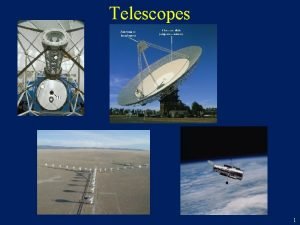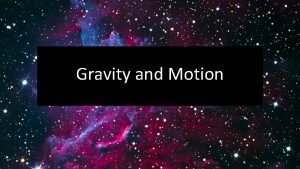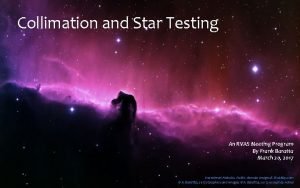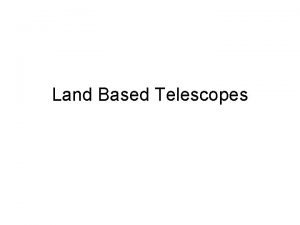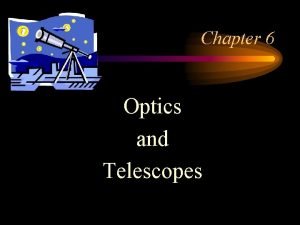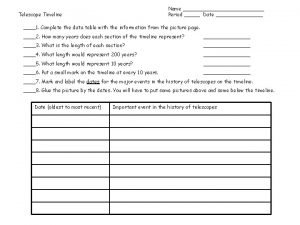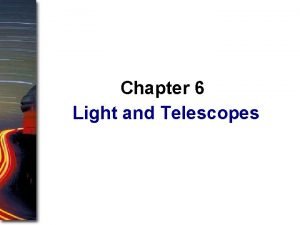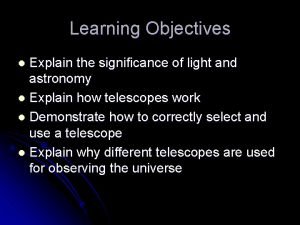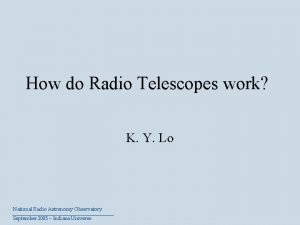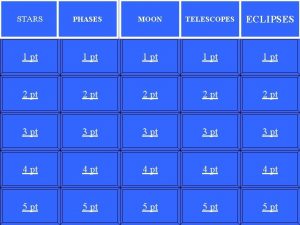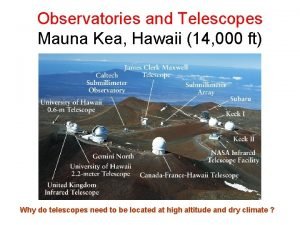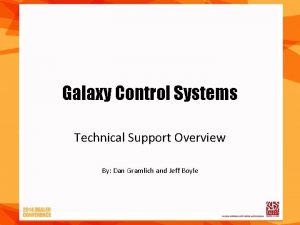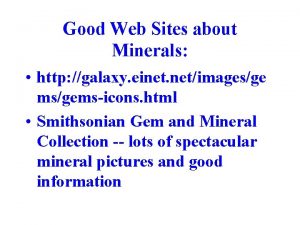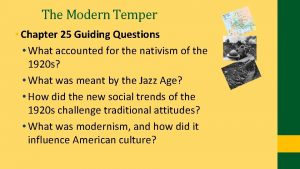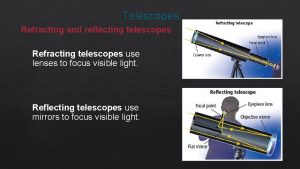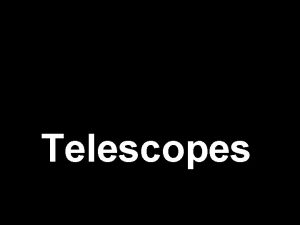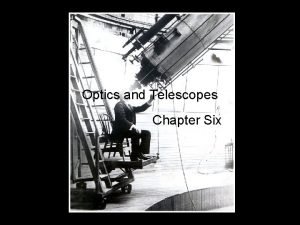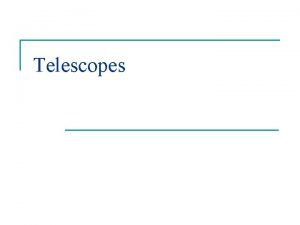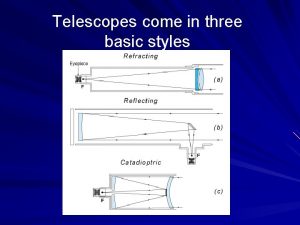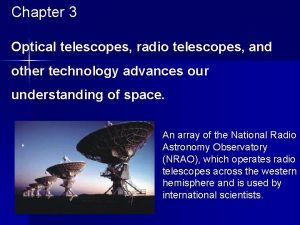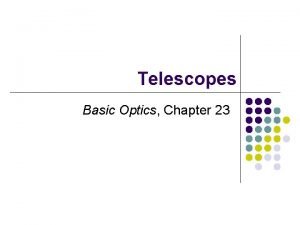Telescopes Galaxy 3 Galaxy 1 Galaxy 4 Galaxy

















- Slides: 17

Telescopes

Galaxy 3 Galaxy 1 Galaxy 4 Galaxy 2 How many galaxies can you see

Exploring the Universe Telescopes – are Fantastic!

What they find ! The Universe contains the most amazing objects The Questions – How do they find them? What do they use?

Optical Telescopes • Most common type of telescope • Used to study visible light from objects • Allows you to see millions of stars and other objects

Refracting Telescopes • Uses lenses to gather and focus light • Has an objective lens that bends light that passes through it and focuses the light to be magnified by an eyepiece

Reflecting Telescopes • Uses a curved mirror to gather and focus light • Focuses on all the colors of light • Gathers more light than refracting telescopes

Very Large Reflecting Telescopes • Several mirrors work together to collect light and focus it in the same area

Optical Telescopes and the Atmosphere • Air pollution, water vapor, and light pollution distort the images produced by optical telescopes. • Collects visible light and focuses it to a focal point for closer observation.

Other Telescopes – Hubble Space Telescope • Does not travel to stars, planets, or galaxies • Whirls around Earth at about 17, 000 mph • About as long as a school bus • Has an unobstructed view of the universe • First major optical telescope to be placed in space

The Electromagnetic Spectrum • All of the frequencies or wavelengths of electromagnetic radiation

Detecting Electromagnetic Radiation • The Earth’s atmosphere blocks most invisible radiation from objects in space. • Each color of light is a different wavelength of electromagnetic radiation. • Radiation that can pass through the atmosphere includes some radio waves, microwaves, infrared light, visible light, and some ultraviolet light.

Nonoptical Telescopes • Detect radiation that cannot be seen by the human eye • Observes things at several wavelengths

Radio Telescopes • Detect radio waves, not light waves • Much larger than optical telescopes

Linking Radio Telescopes • Produces detailed images of the universe • When linked together, they work like one giant telescope

Nonoptical Telescopes in Space • Placed in space because most electromagnetic waves are blocked by Earth’s atmosphere

• Turn in your textbook to page 563. • In complete sentences, answer questions 1 and 2. • Write and answer in complete sentences questions 3, 4, 6, 9, 10, and 11.
 Galaxys
Galaxys How do telescopes work
How do telescopes work Modern telescopes make it possible for astronomers
Modern telescopes make it possible for astronomers Star testing telescope
Star testing telescope Light bucket telescope
Light bucket telescope All modern large optical telescopes are refractors.
All modern large optical telescopes are refractors. Telescope history timeline
Telescope history timeline Computer controlled telescopes
Computer controlled telescopes Guidepost of light
Guidepost of light A building that contains one or more telescopes
A building that contains one or more telescopes Significance of light
Significance of light How do radio telescopes work
How do radio telescopes work New moon telescopes
New moon telescopes Chromatic aberration affects reflector telescopes.
Chromatic aberration affects reflector telescopes. System galaxy tech support
System galaxy tech support Galazy.einet
Galazy.einet Hubble galaxy classification
Hubble galaxy classification Galaxy questions
Galaxy questions

